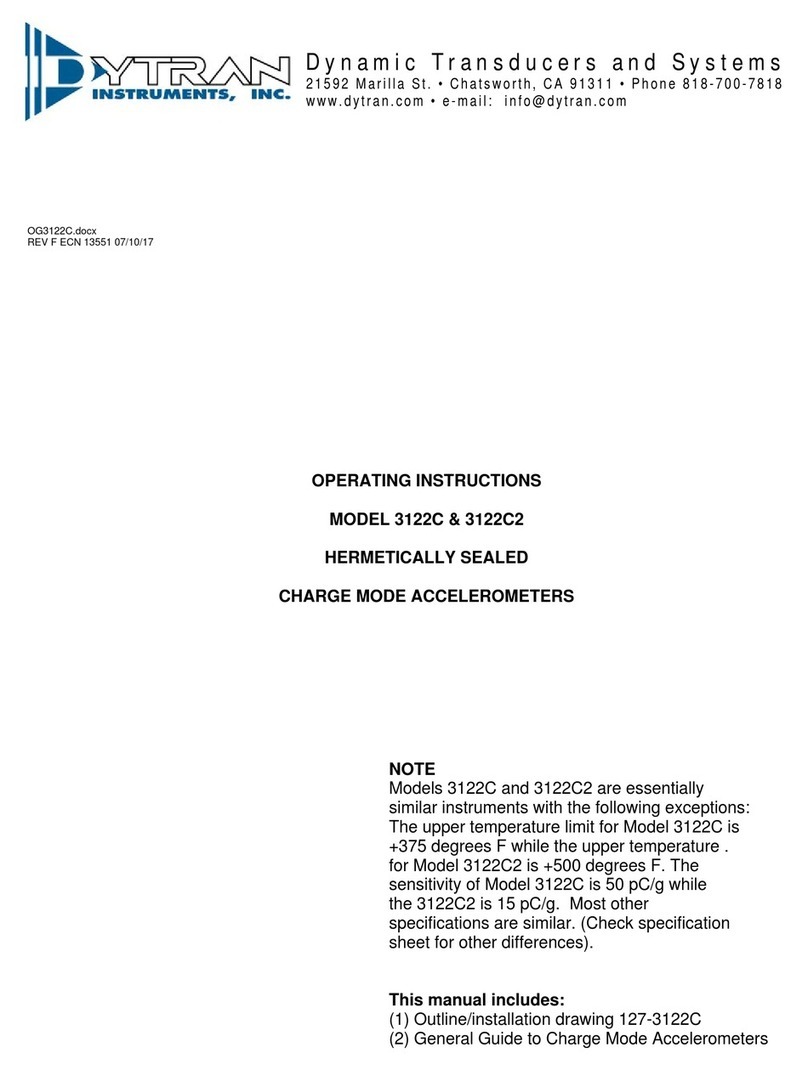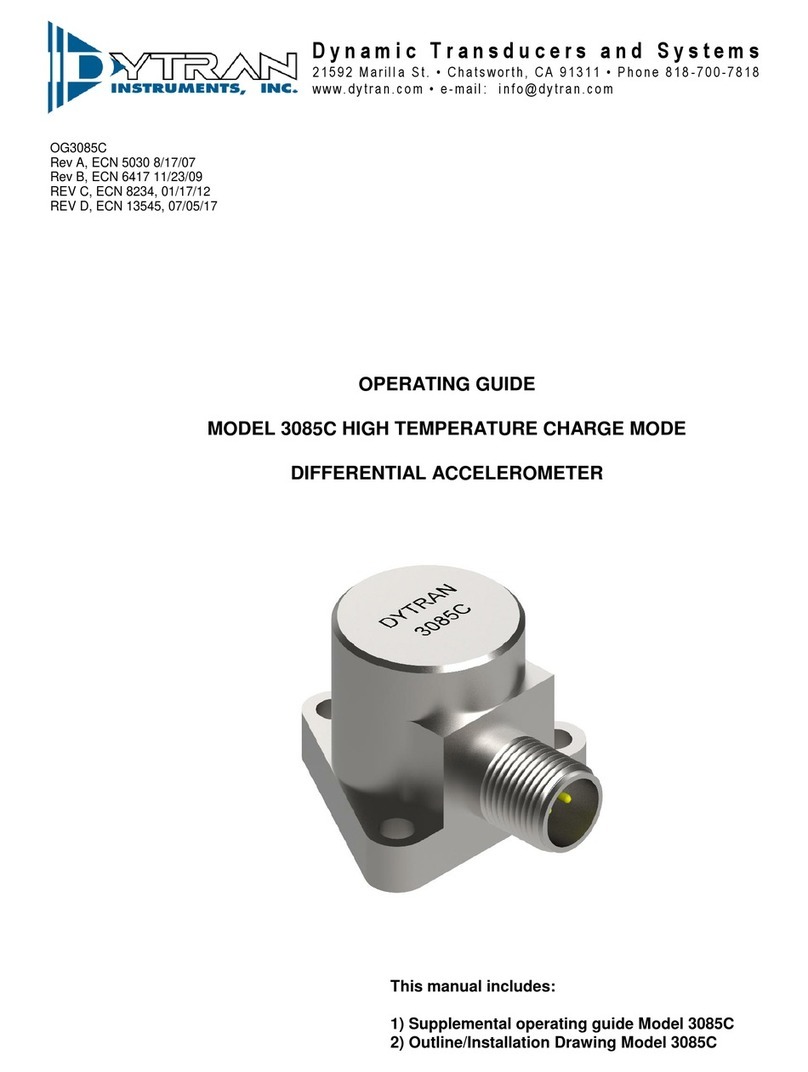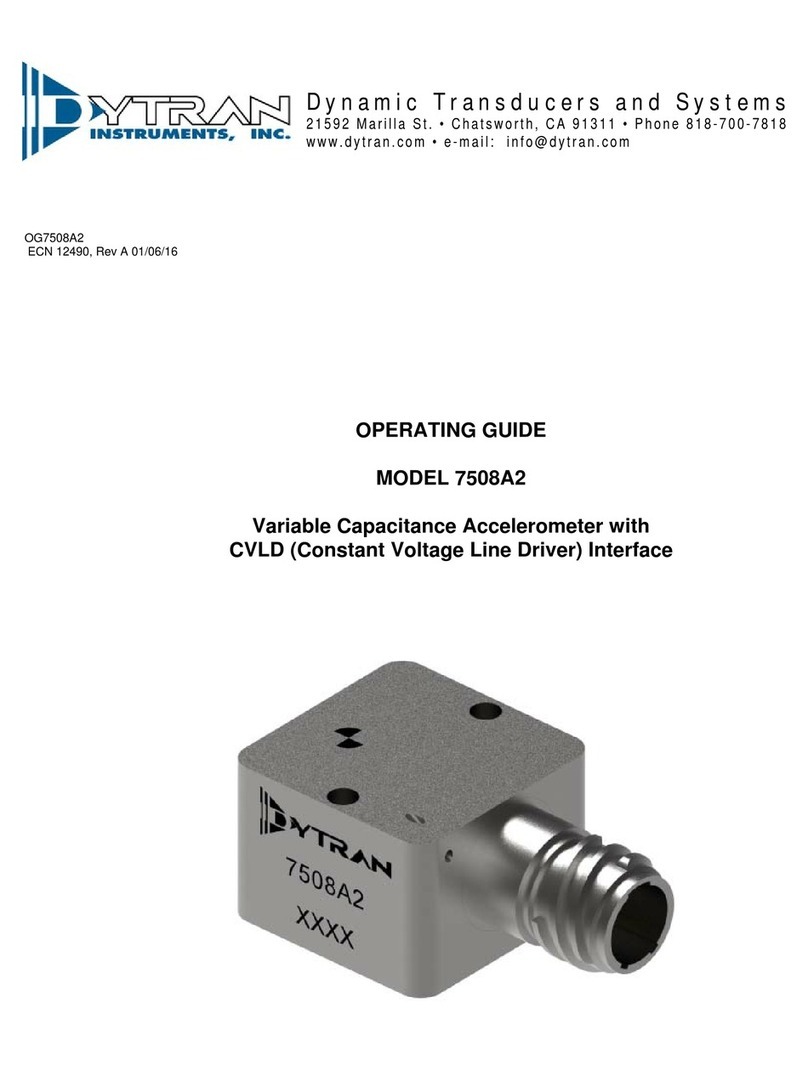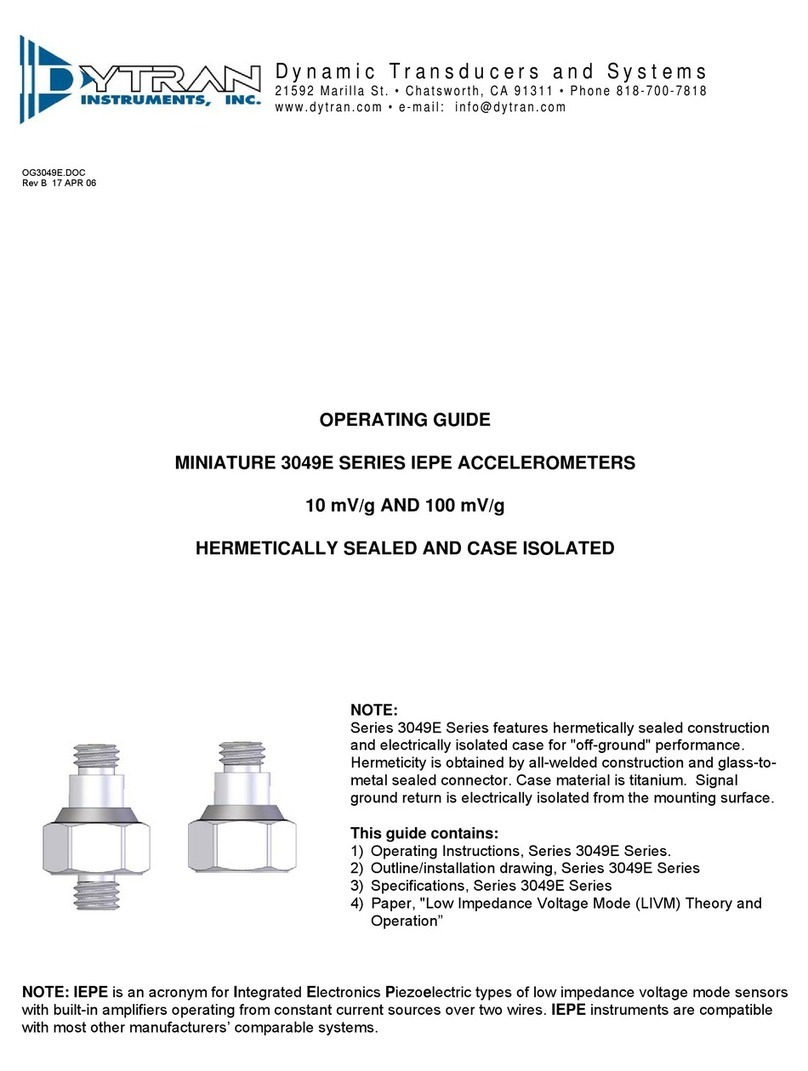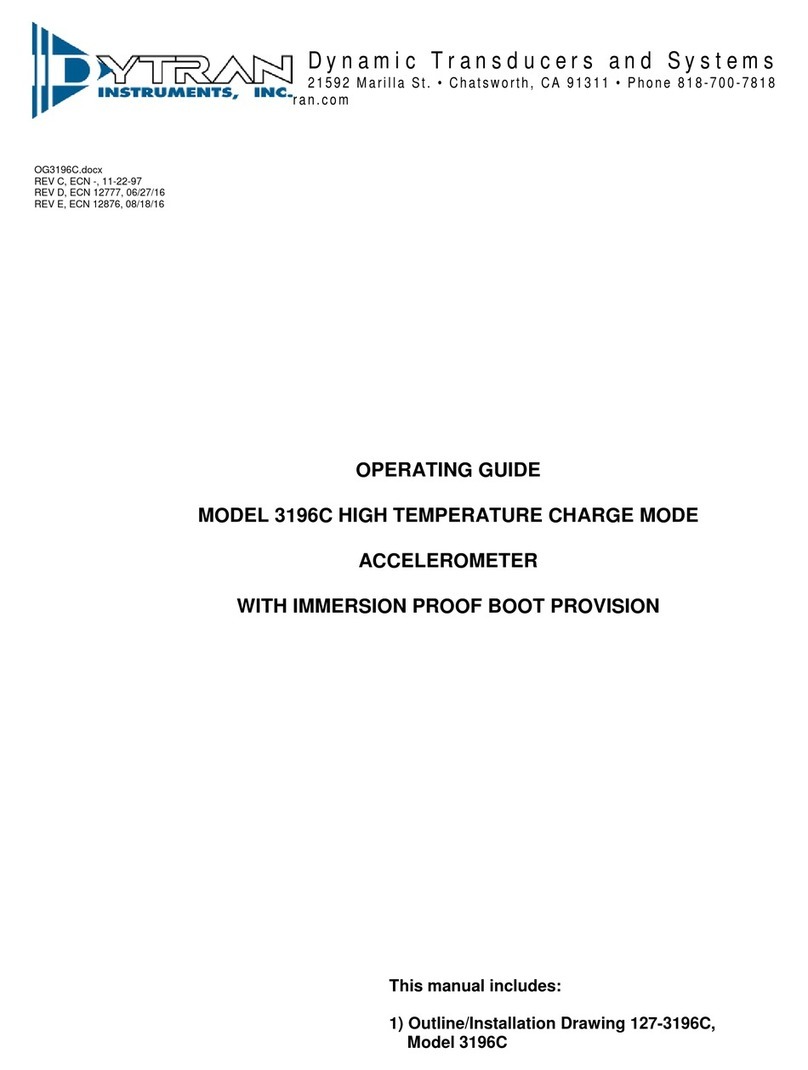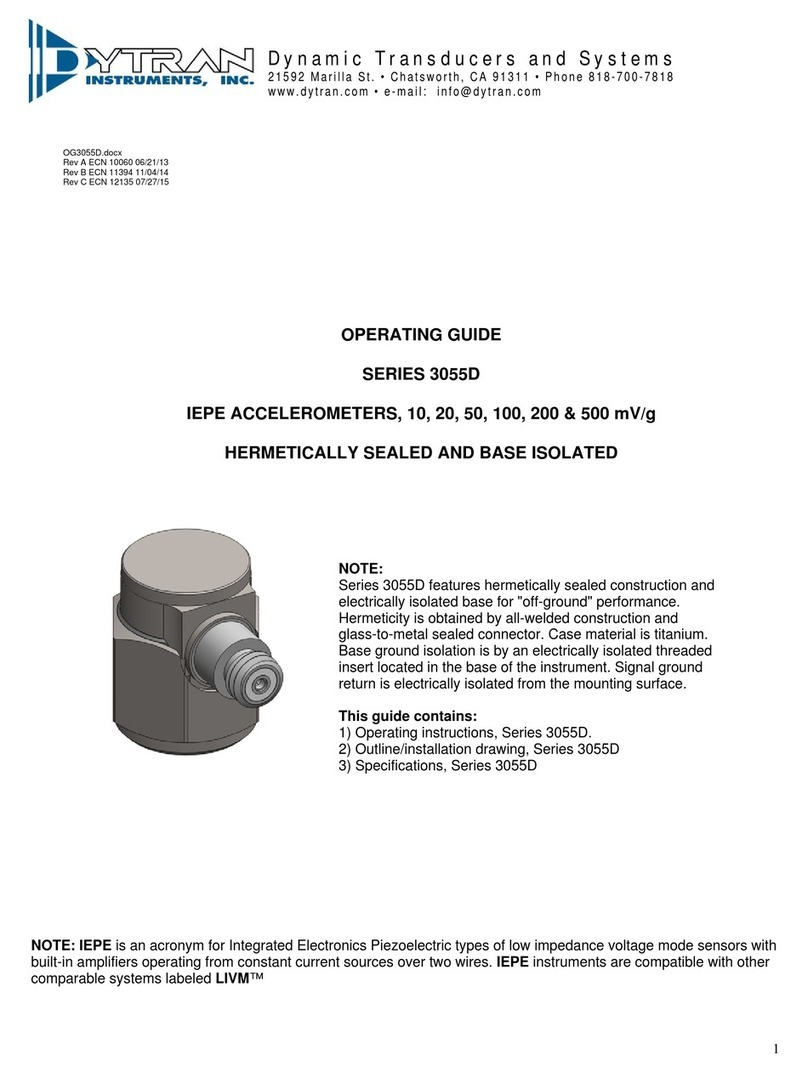
REV C ECN 10389 09/24/13
2
OPERATING INSTRUCTIONS
MODEL 3224C MINIATURE CHARGE MODE ACCELEROMETER
INTRODUCTION
Model 3224C is arguably, the world’s smallest
piezoelectric, charge mode piezoelectric designed to
mount in spaces inaccessible to other types of
accelerometers.
Featuring a titanium case and weighing only
0.2 grams, this instrument is ideal for the
measurement of shock and vibration of very small,
lightweight specimens such as printed circuit boards
and board-mounted components.
Designed for adhesive mount, Model 3224C
may be mounted in very narrow spaces only slightly
greater than .138 inch (3.51 mm).
A 3 ft. long coaxial cable is permanently
attached to the body of the accelerometer and
terminates in a 10-32 coaxial male-threaded
connector.
DESCRIPTION
Refer to outline/installation drawing 127-
3224C.
Model 3224C is constructed in "teardrop" form
with the connector at the end of the teardrop. The
body is made from titanium for low mass and high
stiffness.
Model 3224C generates an electrostatic
charge mode signal by stressing two " shear" type self-
generating piezoceramic crystals in response to input
acceleration. The crystal is preloaded to a flat crystal
support and is preloaded to this post by screws.
Because of its very low mass and high crystal
stiffness, this instrument has a resonant frequency of
about 40 kHz. This means that it may be used to
measure high frequency vibrations with very little error.
INSTALLATION
IMPORTANT: Before mounting the Model
3224C, it is important to identify the mounting surface.
It is the raised .129 diameter boss at the bottom of the
instrument. The flat side is the top of the instrument.
DO NOT MOUNT TO THE TOP SURFACE. Not only
will the signal polarity be reversed and the sensitivity
and frequency response be adversely affected but
there is danger of damaging the top cap of the
accelerometer when removing it, if mounted in the
inverted position. This type of damage is considered
abuse and is not covered by the manufacturer's
warranty.
To install Model 3224C, it is necessary to
select (or prepare) a flat surface to accept the .129
diameter mounting surface of the instrument. As a rule
of thumb, the flatter the mounting surface, the better
the high frequency response will be. A surface flat to
.001 TIR will give excellent results when a thin glue
line is used during mounting.
Clean the mounting surfaces with solvents
such as alcohol or Freon, etc., to remove debris, oils
and greases before mounting.
The recommended adhesives are the "instant"
setting cynoacrylate cements such as Eastman 910
and "Crazy Glue". Apply a very small drop to either
mating surface, and simply press the 3224C to the
mating surface with the finger and hold for 30 seconds.
If the adhesive does not set, check the expiration date
on the container. It is our experience that when the
glue gets old, the first indication is that it will not set up
properly. Replace if necessary.
Other types of adhesive may be used but
consider them carefully. Dental cement is not
recommended for this instrument because if its
tenacity. Removal when this adhesive is used may
harm the instrument.
In some cases, mounting waxes such as
"Petro" wax may be used to mount the 3224C but this
method is not suitable for measurements at high
temperature and high frequency.
Irrespective of which adhesive is used, keep
the glue line thin, i.e., don't use too much adhesive.
Too much adhesive places a "spring" between the
specimen and the instrument. This can create another
second order spring mass system (the mass being the
weight of the accelerometer) and can cause serious
measurement errors at high frequencies.













